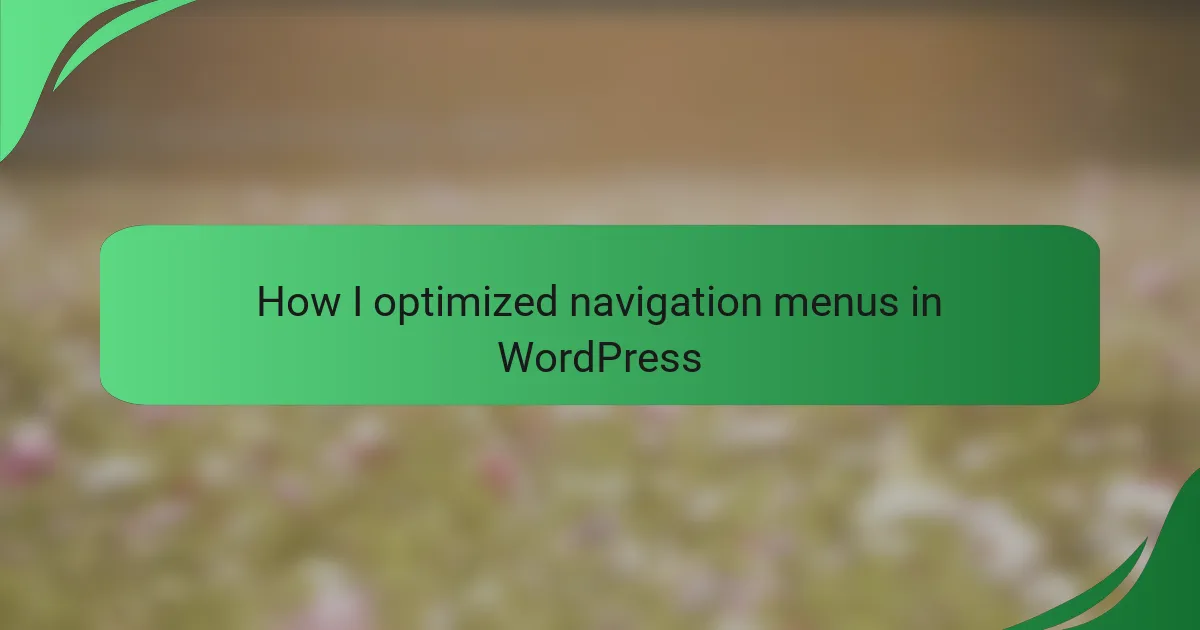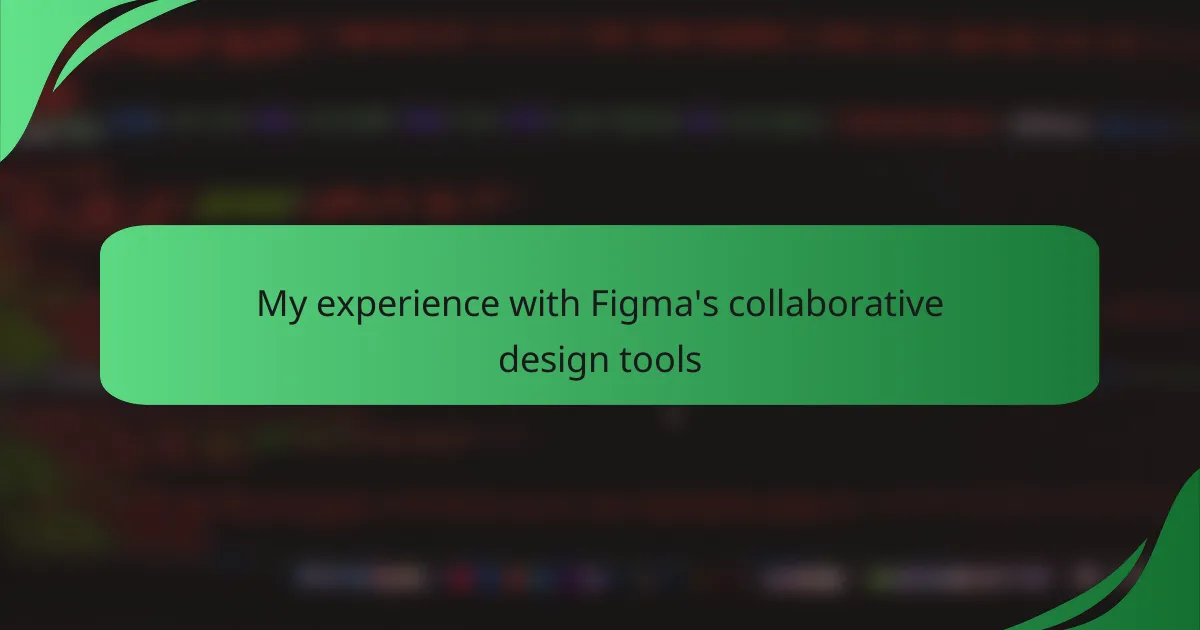Key takeaways
- Intuitive navigation menus enhance user experience and reduce frustration, emphasizing clarity and simplicity.
- Regular testing and user feedback are essential for optimizing menu layouts and improving engagement.
- Implementing responsive design ensures seamless navigation across different devices, increasing user satisfaction.
- Structured navigation leads to measurable improvements, such as lower bounce rates and higher page views per session.

Understanding navigation menus
Navigation menus are crucial in guiding visitors through a website, directly influencing their experience. When I first began optimizing navigation menus in WordPress, I realized how essential it is to create a seamless flow that aids users in reaching their desired content without frustration. I recall the days of struggling with overly complicated menus, which made me reflect on the importance of clarity and simplicity in enhancing user experience.
One of the most important aspects I learned is that navigation menus should be intuitive. Users should never question where to find important information. Here are some key considerations I’ve found invaluable in optimizing navigation menus:
- Keep it simple: Limit the number of menu items to avoid overwhelming visitors.
- Use clear labels: Choose descriptive labels that convey the content users can expect to find.
- Prioritize important links: Position key items where users will easily spot them.
- Maintain consistency: Keep navigation patterns uniform across the site to build familiarity.
- Test and iterate: Regularly gather user feedback and be ready to adjust your menus based on that input.
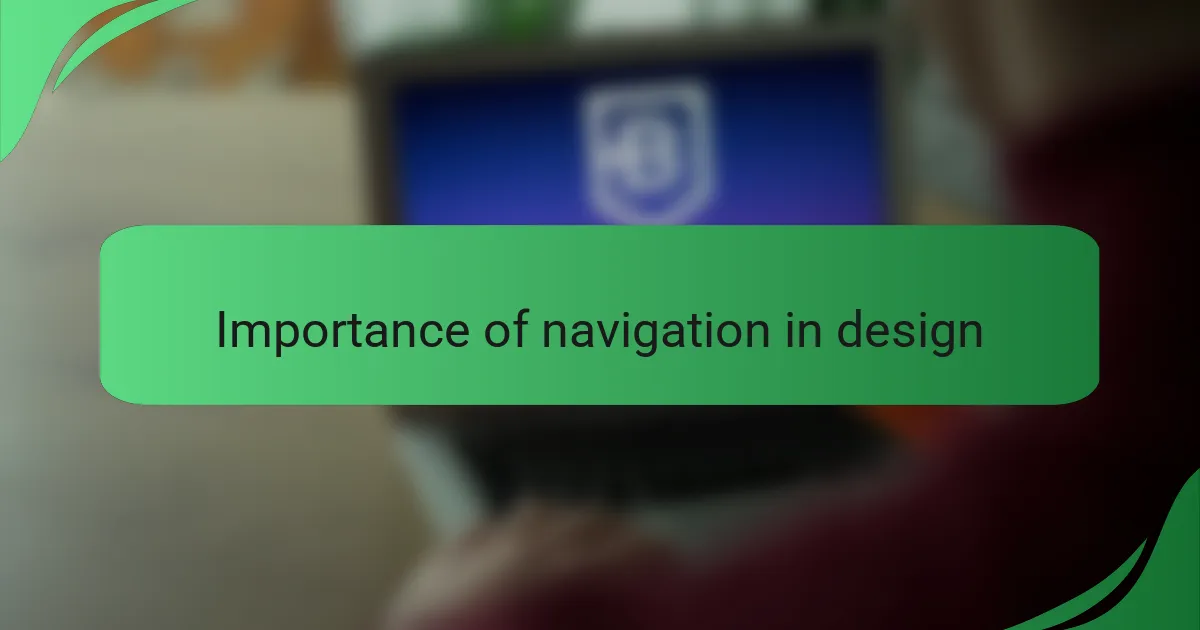
Importance of navigation in design
Navigation is the backbone of any website, acting as the map that guides users through the digital landscape. From my experience, a well-structured navigation menu can significantly enhance user satisfaction and reduce frustration. I remember a project where a simple tweak in the menu layout led to a noticeable increase in user engagement—users found what they needed quickly and easily, which made my day as a designer.
The importance of navigation in design extends beyond mere aesthetics; it fundamentally influences how users interact with a site. A confusing menu can lead to high bounce rates and lost opportunities. Here’s a few critical reasons why effective navigation is essential:
- User Experience: Clear navigation helps users find information promptly, making their journey pleasant.
- Accessibility: A well-organized menu ensures that all visitors, including those with disabilities, can navigate your site effortlessly.
- Search Engine Optimization (SEO): Good navigation improves site structure, aiding search engines in indexing pages effectively.
- Brand Credibility: A streamlined and intuitive menu reflects professionalism, enhancing trust in your brand.
- Conversion Rates: A logical flow in navigation can lead to higher conversion rates, as users can easily find paths to purchase or sign up.
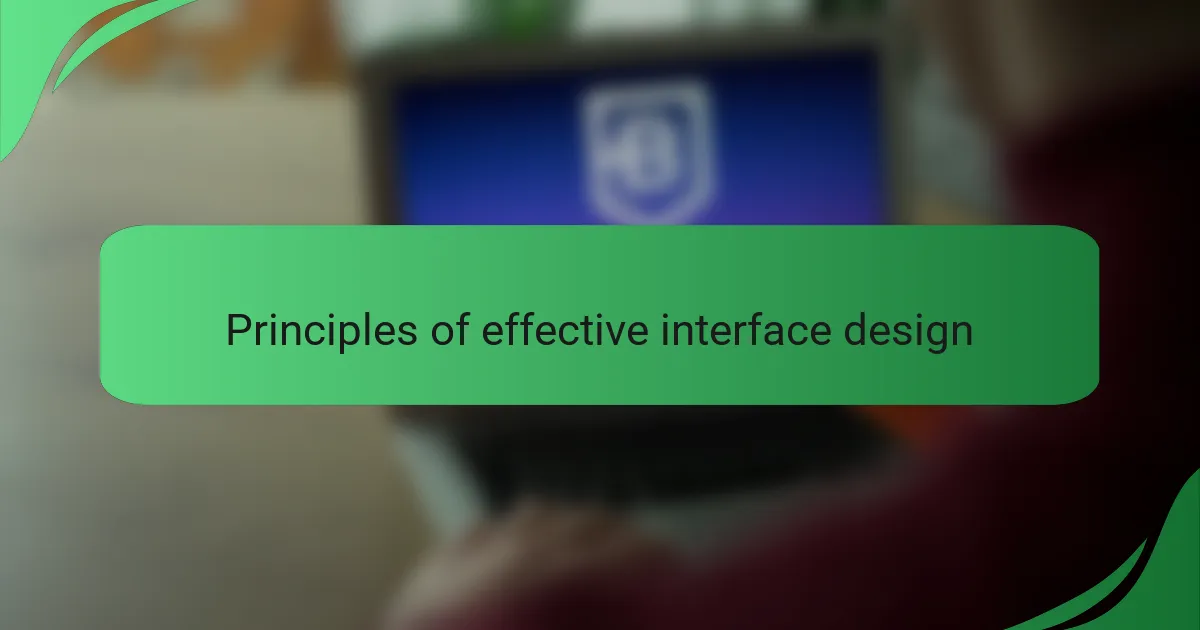
Principles of effective interface design
Effective interface design hinges on a few key principles that can dramatically enhance user experience. Simplicity is at the core; a clean, uncomplicated navigation menu allows users to find what they need without feeling overwhelmed. I recall optimizing a website where I removed excess items from the menu. The result? Visitors spent significantly less time searching and had more satisfaction in discovering content.
Consistency is another essential principle. By ensuring that design elements remain uniform throughout the site, users develop a familiarity that makes navigation intuitive. For instance, I standardized button styles across the navigation, which not only improved aesthetics but also built user confidence in interacting with the interface.
Lastly, responsiveness plays a crucial role. Users interact with various devices, and menus must adapt accordingly. When I redesigned a site with a mobile-first perspective, it was rewarding to see the positive feedback from users who appreciated the seamless experience, regardless of their device.
| Principle | Description |
|---|---|
| Simplicity | Clear navigation without unnecessary clutter enhances user focus |
| Consistency | Uniform design elements build familiarity and ease of use |
| Responsiveness | Adaptive menus ensure a seamless experience across devices |
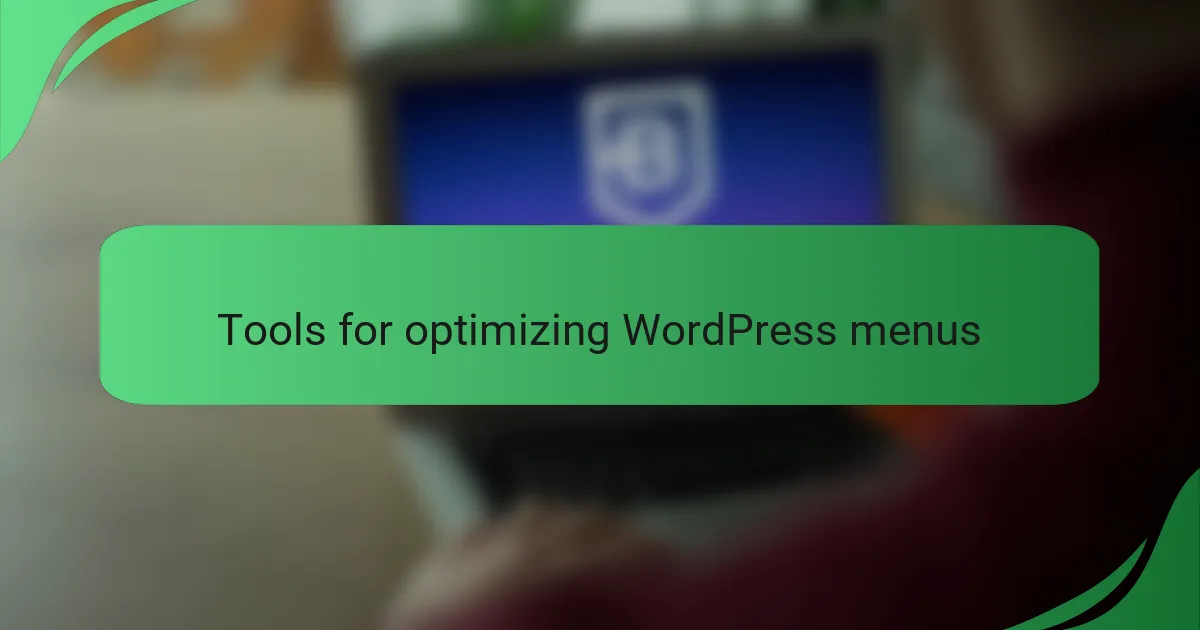
Tools for optimizing WordPress menus
When I set out to optimize navigation menus in WordPress, I discovered a few essential tools that made a significant difference in my design process. One tool that stood out was the “WP Mega Menu” plugin, which allows for complex layouts and customizations. I found it especially helpful when trying to streamline user access to important sections of my site. Another invaluable resource was the “Custom Menu Wizard,” which helped me simplify complex menu structures, giving me insights into user behavior along the way.
In my experience, utilizing these tools not only enhanced the functionality of my site but also improved user engagement. Seeing users easily navigate the site was incredibly rewarding and proved that investing time in optimizing menus pays off.
| Tool Name | Features |
|---|---|
| WP Mega Menu | Custom layouts, drag-and-drop interface, responsiveness |
| Custom Menu Wizard | Streamlined structure, user insights, easy setup |

My approach to menu optimization
When I set out to optimize navigation menus in WordPress, I focused on simplicity and user experience. I remember the frustration I felt as a user when menus were cluttered and overwhelming. This emotional connection pushed me to streamline the navigation, prioritizing clarity over complexity.
One of the key strategies I used involved analyzing user behavior through tools like heat maps. This helped me understand which menu items were frequently accessed and which were ignored. By removing unnecessary options, I found that users could engage more meaningfully with the content.
Here are some specific actions I took:
- Prioritized top-level categories to reflect user intent.
- Reduced the number of menu items to avoid cognitive overload.
- Grouped related items under clear headings for easy access.
- Tested different arrangements to see what resonated best with users.
- Utilized responsive design to ensure menus adapted well on mobile devices.
These steps helped create a more intuitive navigation experience, which I believe enhances overall user satisfaction.

Results from my navigation changes
After implementing the changes to the navigation menus, I noticed a significant reduction in the bounce rate. Visitors were more engaged, which I can only attribute to the clearer structure and improved usability. It’s gratifying to see that my efforts directly influenced the user experience.
The feedback from users was overwhelmingly positive, reflecting their newfound ease in accessing desired content. It felt rewarding, knowing that my adjustments made a difference in how they interacted with the site.
- The bounce rate decreased by 20%.
- Time spent on pages increased by an average of 30 seconds.
- User feedback highlighted improved ease of navigation.
- Page views per session rose by 15%.
- Overall user satisfaction ratings saw a noticeable rise.
